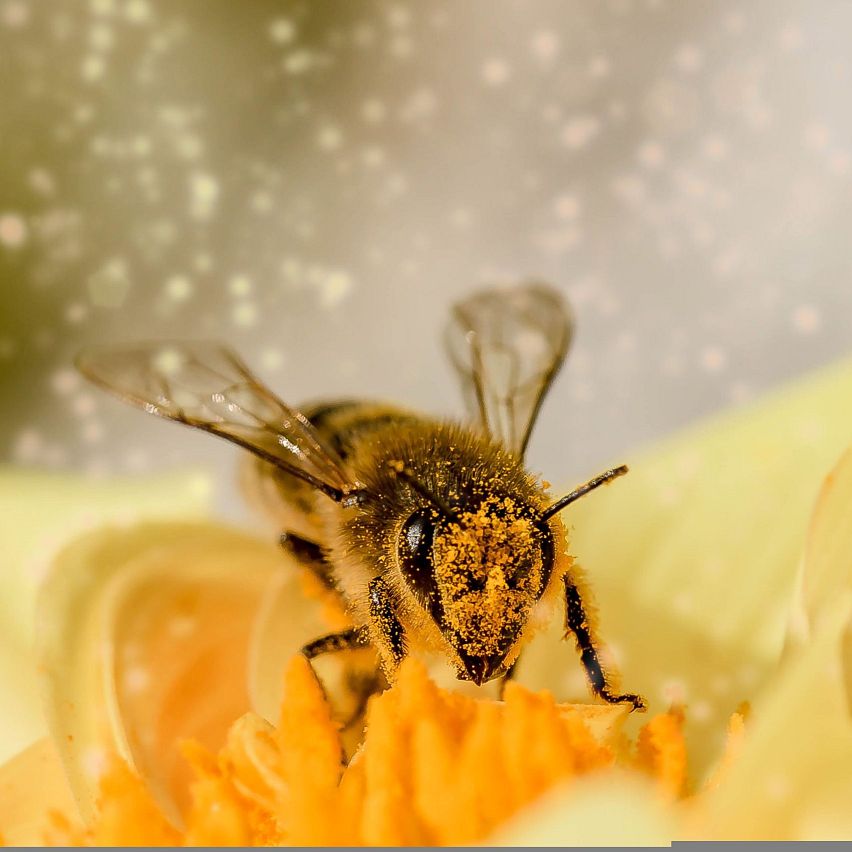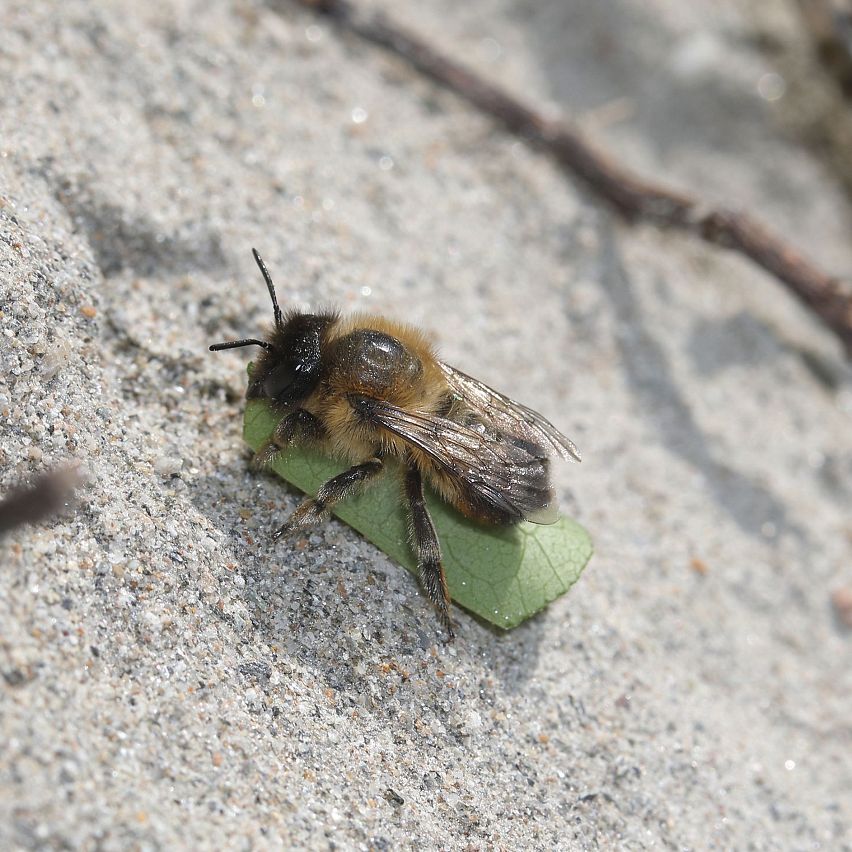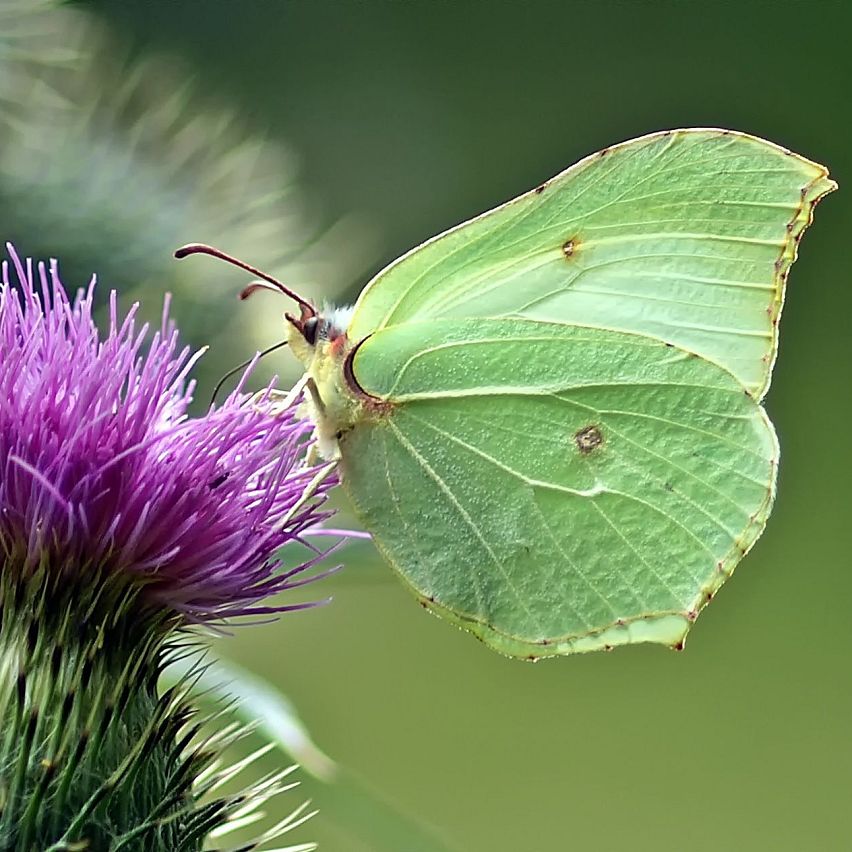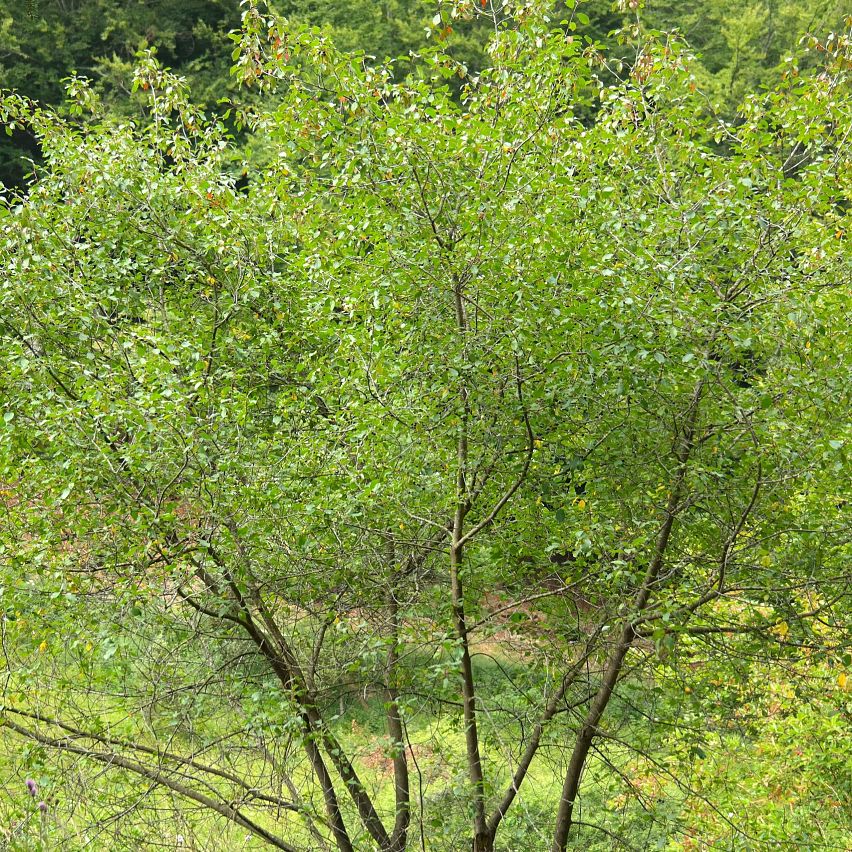BOARD 8 - HUMANS AND BEES
Wild beehives that produced wax and honey already existed in the Stone Age. However, the wild honey bee was not really "tamed" until around 4,500 years ago in ancient Egypt. It was there that bees were first kept in special baskets (called "hives" among beekeepers) to make it easier to obtain the various bee products. Soon many others followed the Egyptians' example: Romans, Greeks, Chinese and other cultures around the world. Bees became increasingly important for humans. And not so much for wax or honey, but because bees help pollinate plants and keeping bees also increased the yield of fruit and vegetables!
Today there are many beekeepers who not only look after the bees but also pollinate them. This allows beekeepers to intervene specifically in regional biodiversity - respectful and sustainable beekeeping is therefore more important today than ever before. So that this unique friendship between humans and animals lasts for many more thousands of years!" please check grammar and spelling

THE SECRET LIFE IN THE HIVE
How does the honey bee live?
The honey bee lives eusocially, meaning it resides in insect colonies. Bumblebees (also bees!) and their relatives, as well as ants and some wasps, often exhibit similar social structures.
Queens are initially supported by workers when founding their colony. These workers later take on all other tasks within the nest, such as storing supplies. The queen cannot survive without her workers. During the summer, the hive can be populated by up to 50,000 bees. In the winter, the population decreases, but they keep each other warm and collectively survive the cold season.

A MASTERPIECE OF NATURE
Anatomy of the bee
A bee's body comprises three main parts: the head, thorax, and abdomen. Bees have excellent vision, with two compound eyes and three ocelli (simple eyes). Externally, bees are protected by a carapace, while internally, organs such as the honey bladder, intestines, and heart are situated.
From wild animal to companion!
How many domesticated (tamed) beneficial animals can you think of?

THE INCONSPICUOUS
Shaggy Leafcutter Bee
– Megachile circumcincta –
- Characteristics: 13 mm in size, brown-haired, females exhibit a conspicuous red abdominal brush (abdominal collector).
- Habitat: Found in sand, gravel, and clay pits, as well as in rough grassland and gardens.
- Way of life: They live solitarily, cutting oval or round pieces out of leaves to construct and seal their brood cells—hence the name! Nests are located in excavated cavities beneath the earth's surface, under stones, or within existing above-ground hollows.
- Observation tip: They show a preference for pollen from bellflower, evening primrose plants, and butterfly flowers.
- Observation period: June to September.

THE AMBASSADOR OF SPRING
Citron butterfly
– Gonepteryx rhamni –
- Characteristics: Male wings are lemon yellow, while female wings are greenish white; when folded, their wings resemble a leaf.
- Habitat: Found in forests, bushes, gardens, and parks; in the Alps, they can be found up to the tree line.
- Way of life: Starting from February, they feed on nectar from liverworts, daphne, and willow catkins. The greenish caterpillars blend perfectly with their food plants (buckthorn). Their feeding marks on the leaves are usually more conspicuous than the caterpillars themselves. After pupation, the moths emerge in July. They spend the winter under blackberries, grasses, or heather plants, where they can survive temperatures as low as minus 20°C without damage.
- Observation tip: Males can be observed searching for females along forest paths in spring, often engaging in hours-long courtship dances before mating.
- Observation period: February to June and mid-July to November

THE INCONSPICUOUS
Buckthorn
– Frangula alnus –
- Habitat: Found in forest edges, pine forests, riparian forests, fens, and sparse deciduous forests up to 1,500 m.
- Uses: Leaves, berries, and fresh bark are classified as poisonous. The laxative effect of the bark was already used in the Iron Age: Mine workers suffered from numerous intestinal parasites, which were first paralyzed with a preparation of worm fern and then "peppered out" with the bark. Additionally, wood ash from decaying trees was used in the past to make black powder.
- Observation tip: Nectar-rich flowers are coveted by beneficial insects, resulting in loud humming and buzzing during the flowering period. Buckthorn is also the most important caterpillar food plant, alongside the lemon butterfly.
- Observation time: All year round.